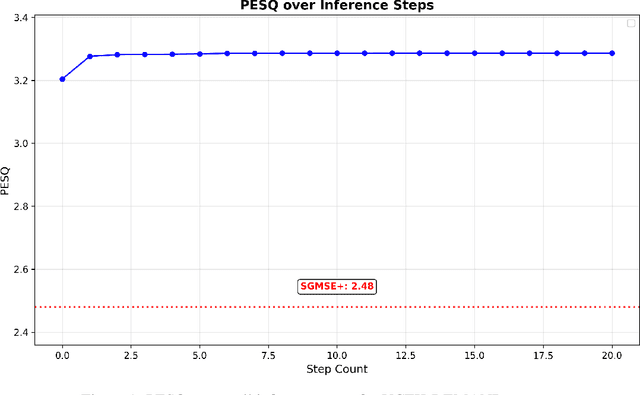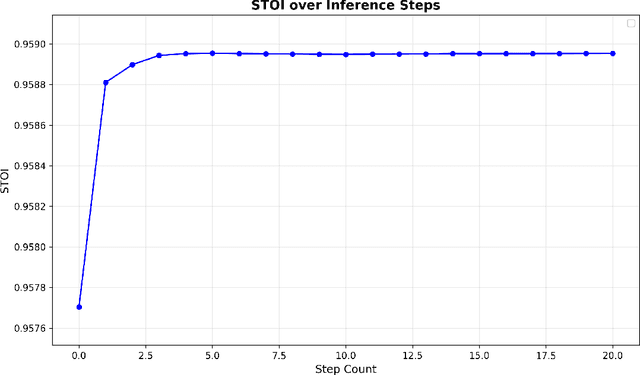Qiuqiang Kong
MelCap: A Unified Single-Codebook Neural Codec for High-Fidelity Audio Compression
Oct 02, 2025Abstract:Neural audio codecs have recently emerged as powerful tools for high-quality and low-bitrate audio compression, leveraging deep generative models to learn latent representations of audio signals. However, existing approaches either rely on a single quantizer that only processes speech domain, or on multiple quantizers that are not well suited for downstream tasks. To address this issue, we propose MelCap, a unified "one-codebook-for-all" neural codec that effectively handles speech, music, and general sound. By decomposing audio reconstruction into two stages, our method preserves more acoustic details than previous single-codebook approaches, while achieving performance comparable to mainstream multi-codebook methods. In the first stage, audio is transformed into mel-spectrograms, which are compressed and quantized into compact single tokens using a 2D tokenizer. A perceptual loss is further applied to mitigate the over-smoothing artifacts observed in spectrogram reconstruction. In the second stage, a Vocoder recovers waveforms from the mel discrete tokens in a single forward pass, enabling real-time decoding. Both objective and subjective evaluations demonstrate that MelCap achieves quality on comparable to state-of-the-art multi-codebook codecs, while retaining the computational simplicity of a single-codebook design, thereby providing an effective representation for downstream tasks.
PodEval: A Multimodal Evaluation Framework for Podcast Audio Generation
Oct 01, 2025Abstract:Recently, an increasing number of multimodal (text and audio) benchmarks have emerged, primarily focusing on evaluating models' understanding capability. However, exploration into assessing generative capabilities remains limited, especially for open-ended long-form content generation. Significant challenges lie in no reference standard answer, no unified evaluation metrics and uncontrollable human judgments. In this work, we take podcast-like audio generation as a starting point and propose PodEval, a comprehensive and well-designed open-source evaluation framework. In this framework: 1) We construct a real-world podcast dataset spanning diverse topics, serving as a reference for human-level creative quality. 2) We introduce a multimodal evaluation strategy and decompose the complex task into three dimensions: text, speech and audio, with different evaluation emphasis on "Content" and "Format". 3) For each modality, we design corresponding evaluation methods, involving both objective metrics and subjective listening test. We leverage representative podcast generation systems (including open-source, close-source, and human-made) in our experiments. The results offer in-depth analysis and insights into podcast generation, demonstrating the effectiveness of PodEval in evaluating open-ended long-form audio. This project is open-source to facilitate public use: https://github.com/yujxx/PodEval.
Region-Specific Audio Tagging for Spatial Sound
Sep 11, 2025Abstract:Audio tagging aims to label sound events appearing in an audio recording. In this paper, we propose region-specific audio tagging, a new task which labels sound events in a given region for spatial audio recorded by a microphone array. The region can be specified as an angular space or a distance from the microphone. We first study the performance of different combinations of spectral, spatial, and position features. Then we extend state-of-the-art audio tagging systems such as pre-trained audio neural networks (PANNs) and audio spectrogram transformer (AST) to the proposed region-specific audio tagging task. Experimental results on both the simulated and the real datasets show the feasibility of the proposed task and the effectiveness of the proposed method. Further experiments show that incorporating the directional features is beneficial for omnidirectional tagging.
CLEAR: Continuous Latent Autoregressive Modeling for High-quality and Low-latency Speech Synthesis
Aug 26, 2025Abstract:Autoregressive (AR) language models have emerged as powerful solutions for zero-shot text-to-speech (TTS) synthesis, capable of generating natural speech from a few seconds of audio prompts. However, conventional AR-based TTS systems relying on discrete audio tokens face the challenge of lossy compression during tokenization, requiring longer discrete token sequences to capture the same information as continuous ones, which adds inference latency and complicates AR modeling. To address this challenge, this paper proposes the Continuous Latent Autoregressive model (CLEAR), a unified zero-shot TTS framework that directly models continuous audio representations. More specifically, CLEAR introduces an enhanced variational autoencoder with shortcut connections, which achieves a high compression ratio to map waveforms into compact continuous latents. A lightweight MLP-based rectified flow head that operates independently for each hidden state is presented to model the continuous latent probability distribution, and trained jointly with the AR model within a single-stage framework. Experiments show that the proposed zero-shot CLEAR TTS can synthesize high-quality speech with low latency. Compared to state-of-the-art (SOTA) TTS models, CLEAR delivers competitive performance in robustness, speaker similarity and naturalness, while offering a lower real-time factor (RTF). In particular, CLEAR achieves SOTA results on the LibriSpeech test-clean dataset, with a word error rate of 1.88\% and an RTF of 0.29. Moreover, CLEAR facilitates streaming speech synthesis with a first-frame delay of 96ms, while maintaining high-quality speech synthesis.
Music Source Restoration
May 27, 2025Abstract:We introduce Music Source Restoration (MSR), a novel task addressing the gap between idealized source separation and real-world music production. Current Music Source Separation (MSS) approaches assume mixtures are simple sums of sources, ignoring signal degradations employed during music production like equalization, compression, and reverb. MSR models mixtures as degraded sums of individually degraded sources, with the goal of recovering original, undegraded signals. Due to the lack of data for MSR, we present RawStems, a dataset annotation of 578 songs with unprocessed source signals organized into 8 primary and 17 secondary instrument groups, totaling 354.13 hours. To the best of our knowledge, RawStems is the first dataset that contains unprocessed music stems with hierarchical categories. We consider spectral filtering, dynamic range compression, harmonic distortion, reverb and lossy codec as possible degradations, and establish U-Former as a baseline method, demonstrating the feasibility of MSR on our dataset. We release the RawStems dataset annotations, degradation simulation pipeline, training code and pre-trained models to be publicly available.
Training-Free Multi-Step Audio Source Separation
May 26, 2025



Abstract:Audio source separation aims to separate a mixture into target sources. Previous audio source separation systems usually conduct one-step inference, which does not fully explore the separation ability of models. In this work, we reveal that pretrained one-step audio source separation models can be leveraged for multi-step separation without additional training. We propose a simple yet effective inference method that iteratively applies separation by optimally blending the input mixture with the previous step's separation result. At each step, we determine the optimal blending ratio by maximizing a metric. We prove that our method always yield improvement over one-step inference, provide error bounds based on model smoothness and metric robustness, and provide theoretical analysis connecting our method to denoising along linear interpolation paths between noise and clean distributions, a property we link to denoising diffusion bridge models. Our approach effectively delivers improved separation performance as a "free lunch" from existing models. Our empirical results demonstrate that our multi-step separation approach consistently outperforms one-step inference across both speech enhancement and music source separation tasks, and can achieve scaling performance similar to training a larger model, using more data, or in some cases employing a multi-step training objective. These improvements appear not only on the optimization metric during multi-step inference, but also extend to nearly all non-optimized metrics (with one exception). We also discuss limitations of our approach and directions for future research.
Llasa: Scaling Train-Time and Inference-Time Compute for Llama-based Speech Synthesis
Feb 06, 2025Abstract:Recent advances in text-based large language models (LLMs), particularly in the GPT series and the o1 model, have demonstrated the effectiveness of scaling both training-time and inference-time compute. However, current state-of-the-art TTS systems leveraging LLMs are often multi-stage, requiring separate models (e.g., diffusion models after LLM), complicating the decision of whether to scale a particular model during training or testing. This work makes the following contributions: First, we explore the scaling of train-time and inference-time compute for speech synthesis. Second, we propose a simple framework Llasa for speech synthesis that employs a single-layer vector quantizer (VQ) codec and a single Transformer architecture to fully align with standard LLMs such as Llama. Our experiments reveal that scaling train-time compute for Llasa consistently improves the naturalness of synthesized speech and enables the generation of more complex and accurate prosody patterns. Furthermore, from the perspective of scaling inference-time compute, we employ speech understanding models as verifiers during the search, finding that scaling inference-time compute shifts the sampling modes toward the preferences of specific verifiers, thereby improving emotional expressiveness, timbre consistency, and content accuracy. In addition, we released the checkpoint and training code for our TTS model (1B, 3B, 8B) and codec model publicly available.
Piano Transcription by Hierarchical Language Modeling with Pretrained Roll-based Encoders
Jan 07, 2025



Abstract:Automatic Music Transcription (AMT), aiming to get musical notes from raw audio, typically uses frame-level systems with piano-roll outputs or language model (LM)-based systems with note-level predictions. However, frame-level systems require manual thresholding, while the LM-based systems struggle with long sequences. In this paper, we propose a hybrid method combining pre-trained roll-based encoders with an LM decoder to leverage the strengths of both methods. Besides, our approach employs a hierarchical prediction strategy, first predicting onset and pitch, then velocity, and finally offset. The hierarchical prediction strategy reduces computational costs by breaking down long sequences into different hierarchies. Evaluated on two benchmark roll-based encoders, our method outperforms traditional piano-roll outputs 0.01 and 0.022 in onset-offset-velocity F1 score, demonstrating its potential as a performance-enhancing plug-in for arbitrary roll-based music transcription encoder.
DRCap: Decoding CLAP Latents with Retrieval-augmented Generation for Zero-shot Audio Captioning
Oct 12, 2024



Abstract:While automated audio captioning (AAC) has made notable progress, traditional fully supervised AAC models still face two critical challenges: the need for expensive audio-text pair data for training and performance degradation when transferring across domains. To overcome these limitations, we present DRCap, a data-efficient and flexible zero-shot audio captioning system that requires text-only data for training and can quickly adapt to new domains without additional fine-tuning. DRCap integrates a contrastive language-audio pre-training (CLAP) model and a large-language model (LLM) as its backbone. During training, the model predicts the ground-truth caption with a fixed text encoder from CLAP, whereas, during inference, the text encoder is replaced with the audio encoder to generate captions for audio clips in a zero-shot manner. To mitigate the modality gap of the CLAP model, we use both the projection strategy from the encoder side and the retrieval-augmented generation strategy from the decoder side. Specifically, audio embeddings are first projected onto a text embedding support to absorb extensive semantic information within the joint multi-modal space of CLAP. At the same time, similar captions retrieved from a datastore are fed as prompts to instruct the LLM, incorporating external knowledge to take full advantage of its strong generative capability. Conditioned on both the projected CLAP embedding and the retrieved similar captions, the model is able to produce a more accurate and semantically rich textual description. By tailoring the text embedding support and the caption datastore to the target domain, DRCap acquires a robust ability to adapt to new domains in a training-free manner. Experimental results demonstrate that DRCap outperforms all other zero-shot models in in-domain scenarios and achieves state-of-the-art performance in cross-domain scenarios.
Extract and Diffuse: Latent Integration for Improved Diffusion-based Speech and Vocal Enhancement
Sep 15, 2024Abstract:Diffusion-based generative models have recently achieved remarkable results in speech and vocal enhancement due to their ability to model complex speech data distributions. While these models generalize well to unseen acoustic environments, they may not achieve the same level of fidelity as the discriminative models specifically trained to enhance particular acoustic conditions. In this paper, we propose Ex-Diff, a novel score-based diffusion model that integrates the latent representations produced by a discriminative model to improve speech and vocal enhancement, which combines the strengths of both generative and discriminative models. Experimental results on the widely used MUSDB dataset show relative improvements of 3.7% in SI-SDR and 10.0% in SI-SIR compared to the baseline diffusion model for speech and vocal enhancement tasks, respectively. Additionally, case studies are provided to further illustrate and analyze the complementary nature of generative and discriminative models in this context.
 Add to Chrome
Add to Chrome Add to Firefox
Add to Firefox Add to Edge
Add to Edge